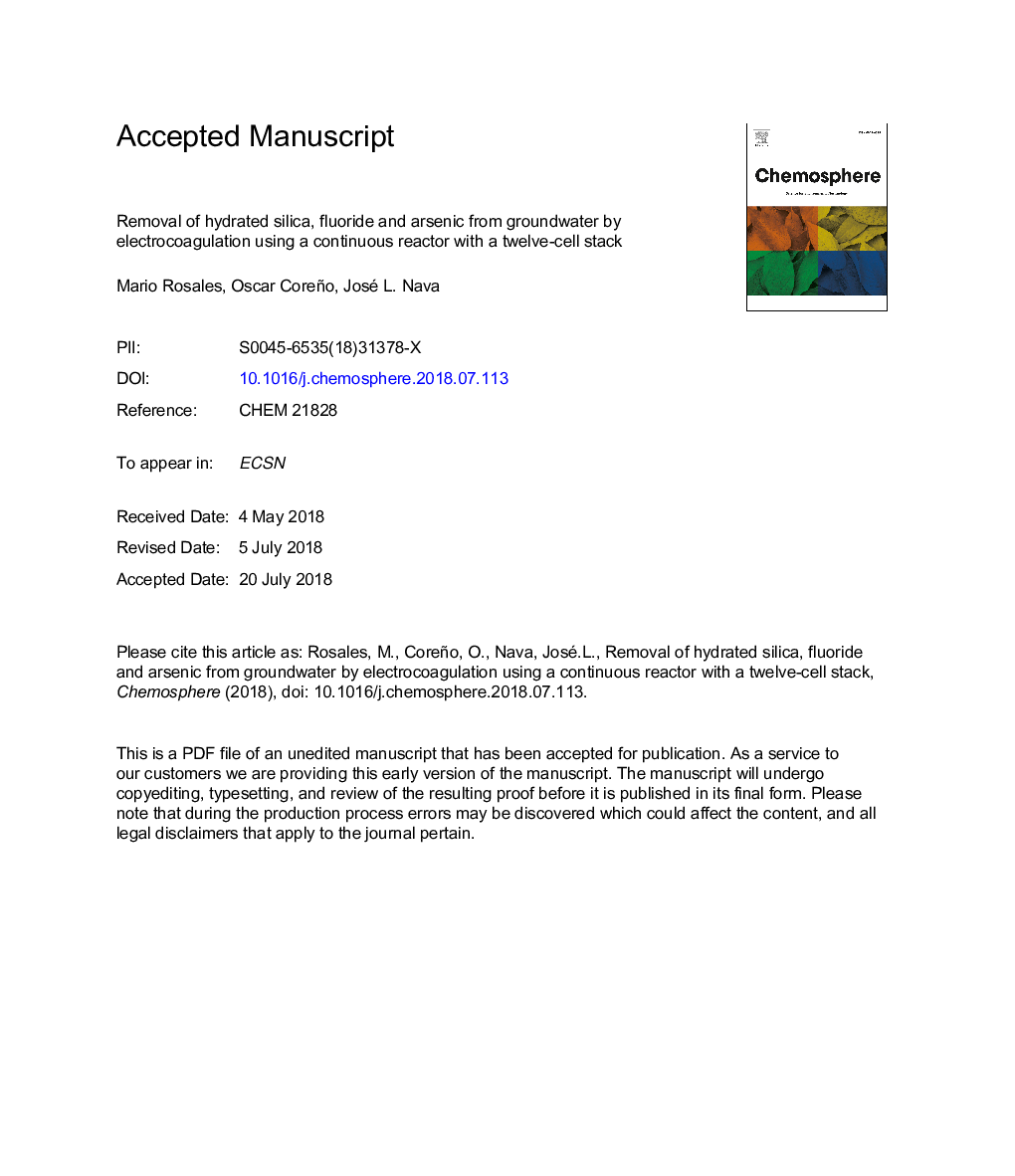| Article ID | Journal | Published Year | Pages | File Type |
|---|---|---|---|---|
| 8850364 | Chemosphere | 2018 | 27 Pages |
Abstract
The simultaneous removal of hydrated silica, fluoride and arsenic from deep well water (hydrated silica 72 mgLâ1, fluoride 4.4 mgLâ1, arsenic 106.2 μgLâ1, sulfate 50 mgLâ1, phosphate 0.99 mgLâ1, pHâ¯=â¯8.2 and conductivity 659 μScmâ1) by electrocoagulation (EC) was investigated. The EC was performed in a continuous electrochemical reactor using aluminum plates as sacrificial anodes coupled directly to a jar test device. The effect of current density (4â¯â¤â¯jâ¯â¤â¯8â¯mAâ¯cmâ2) and mean linear flow rates in the EC reactor (0.057â¯â¤â¯uâ¯â¤â¯0.57â¯cmâ¯sâ1) on the hydrated silica, fluoride, and arsenic removal efficiencies was analyzed. The abatement of hydrated silica was obtained at 8â¯mAâ¯cmâ2 and 0.057â¯cmâ¯sâ1, while the residual concentrations of Fâ and As after the same electrolysis were 0.19â¯mg Lâ1 and 9.8â¯Î¼g Lâ1, satisfying the WHO guidelines for Fâ (â¤1.5â¯mg Lâ1) and As (â¤10â¯Î¼g Lâ1). Spectroscopic analyses on aluminum flocs revealed that they are predominantly composed of aluminum silicates. Arsenates adsorb on aluminum flocs and fluoride replaces a hydroxyl group from aluminum aggregates.
Related Topics
Life Sciences
Environmental Science
Environmental Chemistry
Authors
Mario Rosales, Oscar Coreño, José L. Nava,
